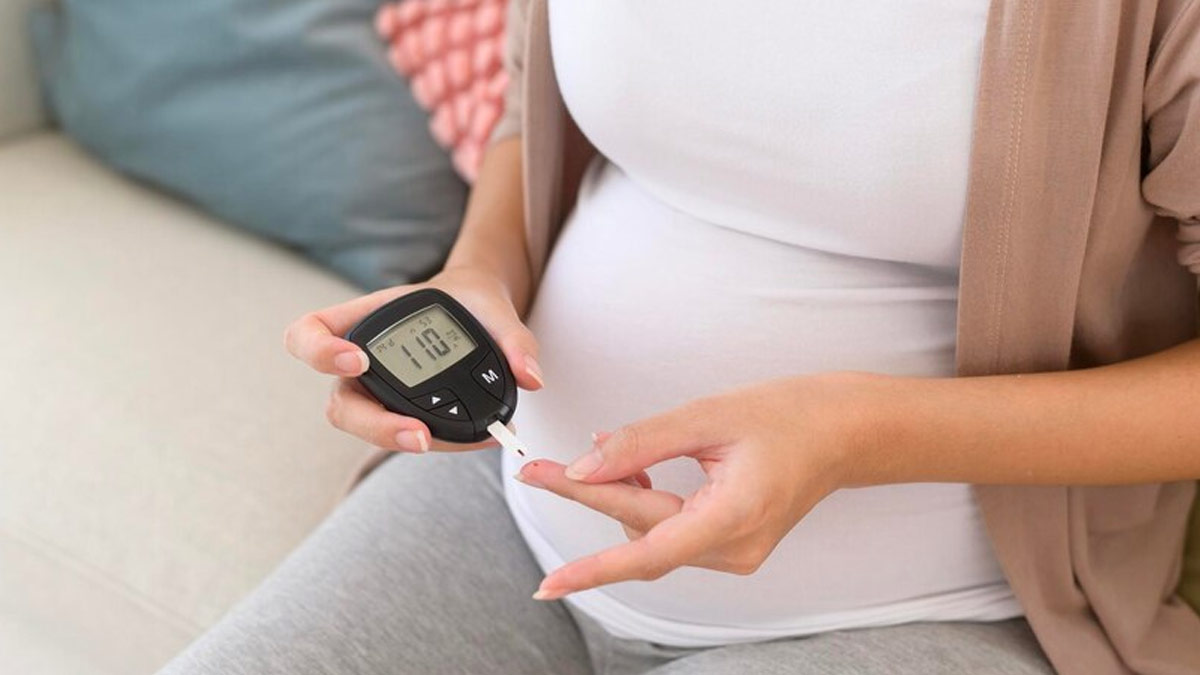
Bringing a new life into the world is an incredible journey, filled with anticipation, joy, and a fair share of challenges. One such challenge many expectant mothers face is gestational diabetes, a condition marked by high blood sugar levels during pregnancy. This diagnosis can naturally lead to concerns about the birthing process. Can a mother with gestational diabetes still have a normal delivery? The good news is that with proper management and care, many women with gestational diabetes can indeed experience a safe and natural birth. Let’s understand the impact of gestational diabetes on delivery, the factors that influence the birthing process, and expert advice on ensuring the best outcomes for both mother and baby.
Table of Content:-
To understand if a pregnant woman with gestational diabetes can have normal delivery, OnlyMyHealth interacted with Dr Chetna Jain Director Dept of Obstetrics & gynecology Cloudnine Group of hospitals, Gurugram.
Explaining, Dr Jain said, “Gestational diabetes is a condition characterised by high blood sugar levels during pregnancy. It affects how your cells use sugar (glucose) and can impact both the mother and the baby's health.” Adding, she said, “However, many women with gestational diabetes can have a normal delivery, although it requires careful management and monitoring.”
Understanding Gestational Diabetes

Prevalence: Gestational diabetes affects approximately 2-10% of pregnancies in the United States.
Risk Factors: Include obesity, a history of gestational diabetes, family history of diabetes, age over 25, and being of certain ethnic backgrounds (e.g., Hispanic, African-American, Native American, or Asian).
Diagnosis: It is typically diagnosed between 24 and 28 weeks of pregnancy using an oral glucose tolerance test (OGTT).
Also read: Gestational Diabetes Is Bad For Mom & Child: Know How To Prevent It
Managing Gestational Diabetes
Proper management of gestational diabetes is crucial for a healthy pregnancy and delivery. Key aspects of management listed by Dr Jain include:
Monitoring Blood Sugar Levels: Regularly check your blood sugar levels to ensure they remain within a target range.
Healthy Diet: Follow a balanced diet rich in fruits, vegetables, whole grains, and lean proteins. Limit simple carbohydrates and sugars.
Exercise: Regular physical activity helps control blood sugar levels.
Medication: If diet and exercise are not enough, medication or insulin injections may be necessary.
Prenatal Care: Frequent check-ups with your healthcare provider to monitor the baby’s growth and development.

Possibility of Normal Delivery
Facts:
Controlled Blood Sugar: If gestational diabetes is well-controlled, many women can have a normal vaginal delivery. “Proper management reduces the risk of complications such as macrosomia (large baby), which can make vaginal delivery more challenging,” Dr Jain said.
Labour Induction: According to Dr Jain, some women with gestational diabetes may require induction labour before the due date to reduce the risk of complications. This decision is based on individual health conditions and the baby's growth.
Close Monitoring: During labour, blood sugar levels will be closely monitored. If blood sugar remains stable, the chances of a normal delivery are higher.
Myths:
Myth: All women with gestational diabetes need a C-section.
Fact: Not all women with gestational diabetes require a caesarean section. “Many can have a normal vaginal delivery if their blood sugar levels are well-controlled and there are no other complications,” Dr Jain said.
Myth: Gestational diabetes always leads to complications during delivery.
Fact: While gestational diabetes can increase the risk of certain complications, proper management significantly reduces these risks. Many women with gestational diabetes have smooth deliveries without major issues.
Also read: 6 Monitoring Factors For Gestational Diabetes
Potential Complications and Interventions
Macrosomia: Babies born to mothers with gestational diabetes may be larger than average, which can lead to complications during delivery, such as shoulder dystocia.
Preterm Birth: Higher risk of preterm birth due to complications from gestational diabetes.
Neonatal Hypoglycemia: Babies may have low blood sugar levels shortly after birth and need monitoring.
Interventions:
Caesarean Section (C-Section): May be recommended if the baby is very large, if there are signs of foetal distress, or if the mother has other complications.
Induction of Labor: Inducing labour before the due date can help prevent complications related to macrosomia and reduce the risk of stillbirth.

Conclusion
Normal delivery is possible for women with gestational diabetes, particularly if the condition is well-managed. Key factors include maintaining stable blood sugar levels, following a healthy diet, regular exercise, and close monitoring by healthcare providers. While there are increased risks associated with gestational diabetes, they can be significantly minimised with proper care and intervention.
It is important to dispel myths and provide accurate information. Not all women with gestational diabetes require a C-section, and many can have a successful vaginal delivery. The goal is to ensure a healthy pregnancy and delivery for both the mother and the baby through diligent management and medical support. Always consult with your healthcare provider to create a personalised care plan that suits your specific needs and circumstances.
Also watch this video
How we keep this article up to date:
We work with experts and keep a close eye on the latest in health and wellness. Whenever there is a new research or helpful information, we update our articles with accurate and useful advice.
Current Version